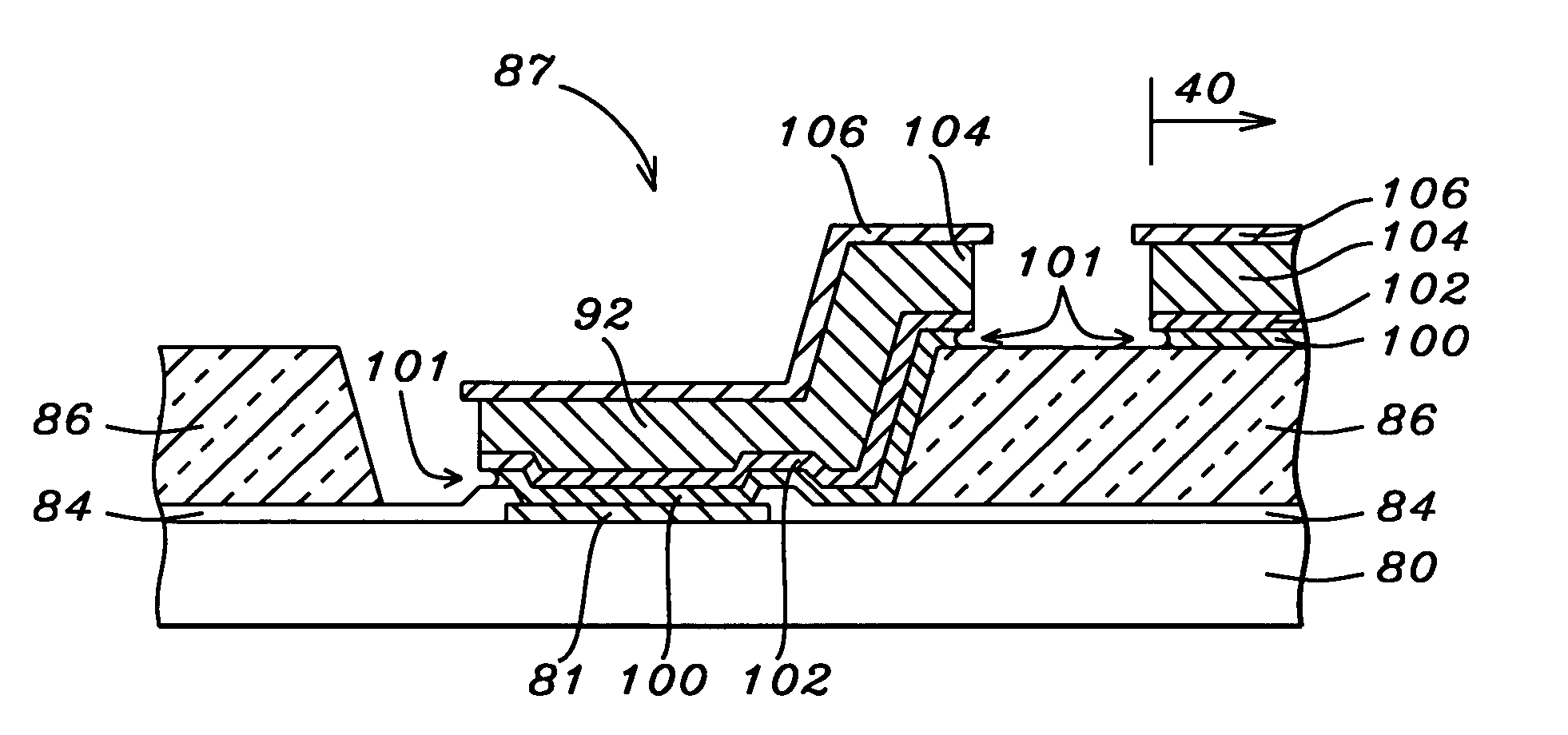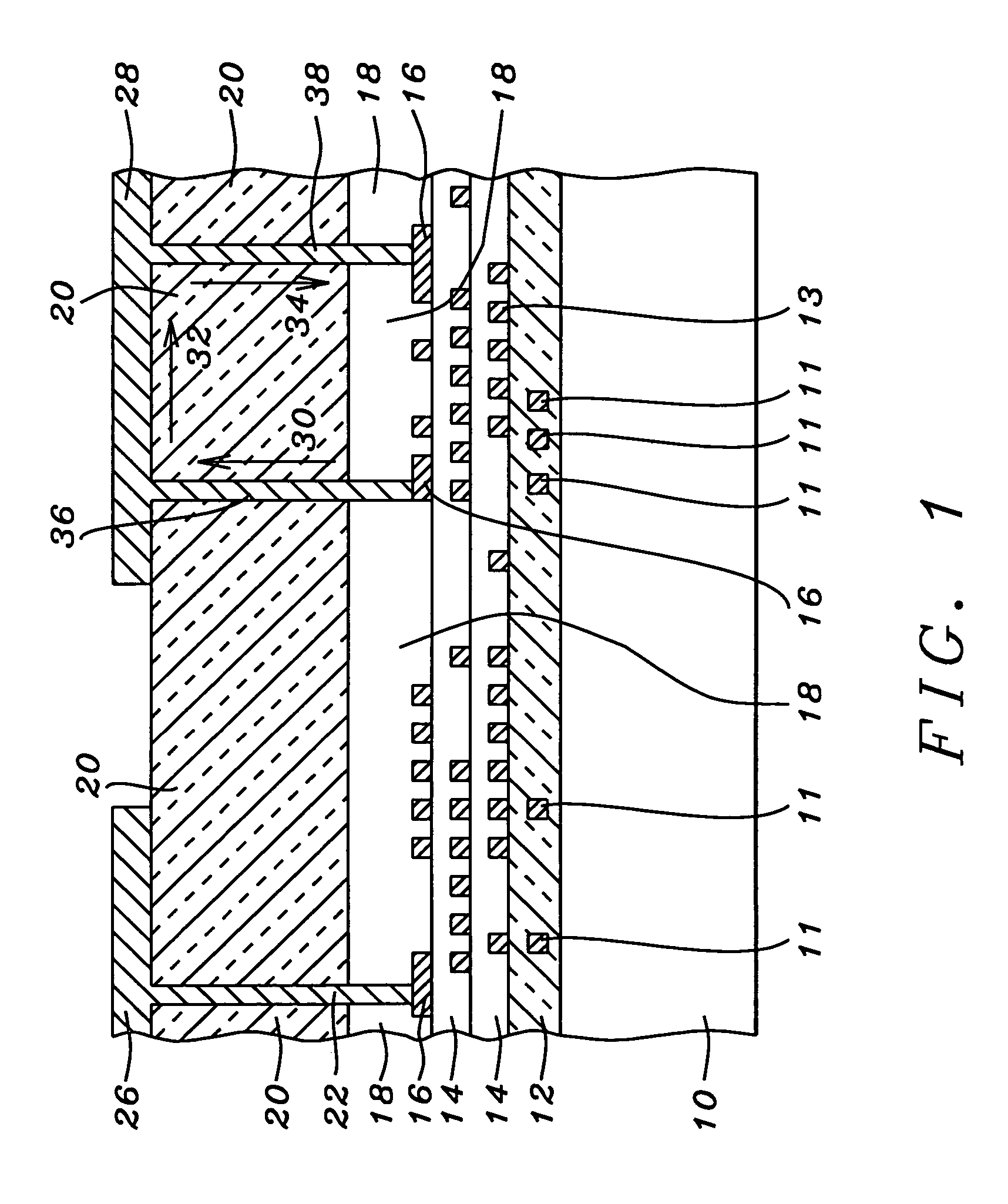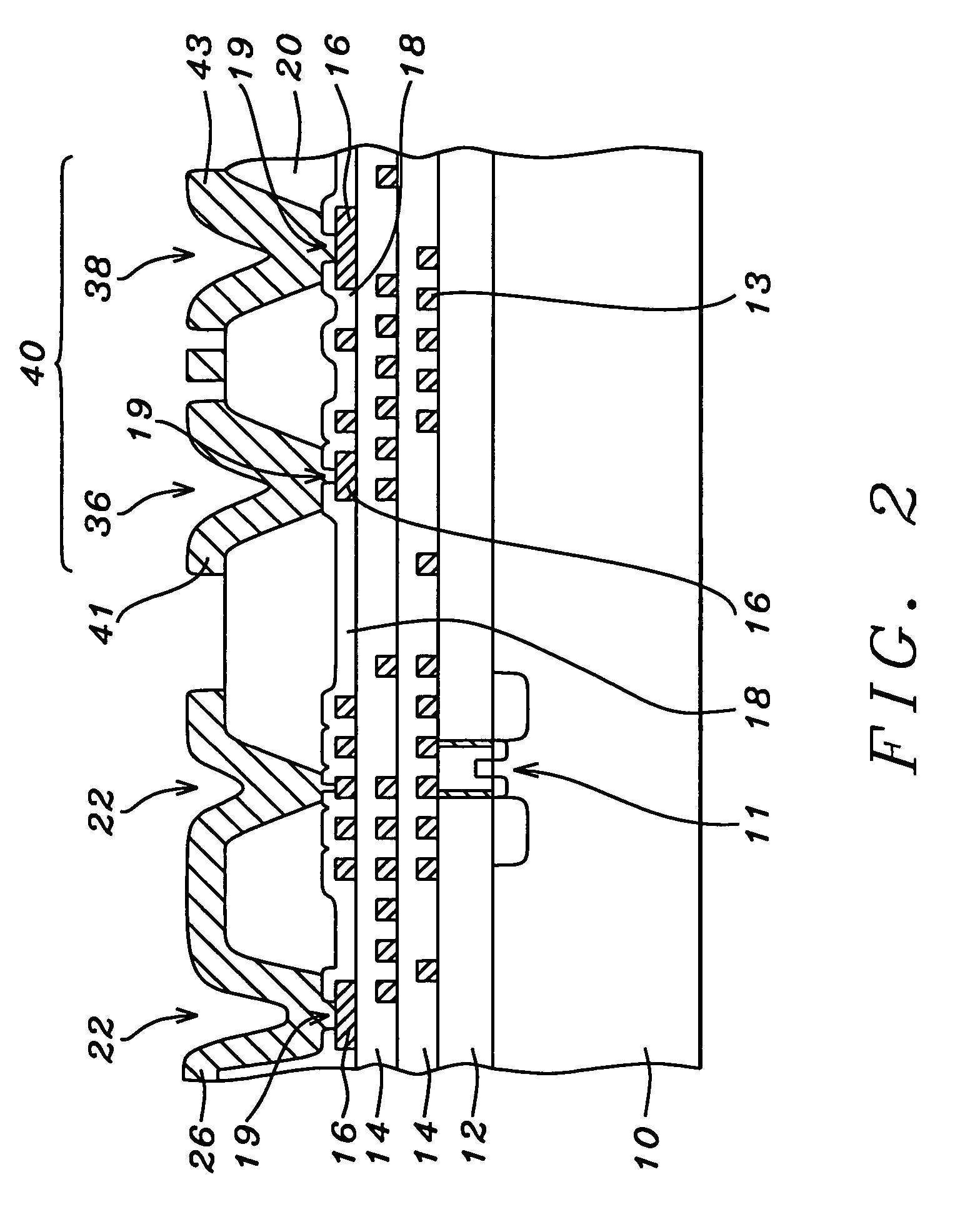Post passivation interconnection process and structures
a post-passivation and interconnection technology, applied in the direction of electrical apparatus, semiconductor devices, semiconductor/solid-state device details, etc., can solve the problems of increasing negative impact on circuit performance, significantly degrading chip performance, and large size of analog circuitry, so as to improve the rf performance of high-performance integrated circuits
- Summary
- Abstract
- Description
- Claims
- Application Information
AI Technical Summary
Benefits of technology
Problems solved by technology
Method used
Image
Examples
Embodiment Construction
[0045]The post-passivation process, described in U.S. Pat. Nos. 6,383,916 and 6,495,442, to the same inventor as the current invention, teaches an Integrated Circuit structure where re-distribution and interconnect metal layers are created in layers of dielectric over the passivation layer of a conventional Integrated Circuit (IC). A layer of passivation is deposited over the IC, a thick layer of polymer is alternately deposited over the surface of the layer of passivation, and thick, wide metal lines are formed over the passivation.
[0046]U.S. Pat. No. 6,303,423 and the co-pending related patent applications, also assigned to a common assignee as the current invention, address, among other objectives, the creation of an inductor whereby the emphasis is on creating an inductor of high Q value above the passivation layer of a semiconductor substrate. The high quality of the inductor of the invention allows for the use of this inductor in high frequency applications while incurring min...
PUM
| Property | Measurement | Unit |
|---|---|---|
| thickness | aaaaa | aaaaa |
| thickness | aaaaa | aaaaa |
| thickness | aaaaa | aaaaa |
Abstract
Description
Claims
Application Information
 Login to View More
Login to View More - R&D
- Intellectual Property
- Life Sciences
- Materials
- Tech Scout
- Unparalleled Data Quality
- Higher Quality Content
- 60% Fewer Hallucinations
Browse by: Latest US Patents, China's latest patents, Technical Efficacy Thesaurus, Application Domain, Technology Topic, Popular Technical Reports.
© 2025 PatSnap. All rights reserved.Legal|Privacy policy|Modern Slavery Act Transparency Statement|Sitemap|About US| Contact US: help@patsnap.com



